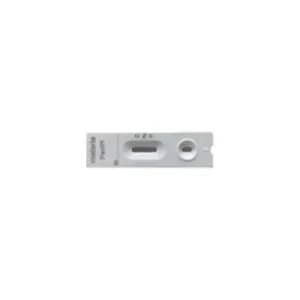The electronic airbag system is a passive safety protection system that works in conjunction with seat belts to provide effective anti-collision protection for the occupants. In the event of a car collision, car airbags can reduce the rate of head injuries by 25% and the rate of facial injuries by about 80%.
History
The airbag was first proposed by Hetrick in August 1953 and obtained the U.S. patent for “automobile buffer safety device”. With the formulation of vehicle safety standards in various countries, the equipment rate of airbags is getting higher and higher. The airbag equipment rate in cars in Europe, the United States, Japan and other countries has reached nearly 100%.
Structure
It is mainly composed of airbag sensors, anti-collision airbags and electronic control devices. The driver’s side anti-collision airbag is installed in the steering wheel; the passenger’s side anti-collision airbag is usually installed on the dashboard. The airbag sensors are installed on the left, right and middle parts of the cab partition respectively; the airbag sensor and airbag system in the middle part are installed together with the electronic control device.
The airbag component mainly consists of an airbag, a gas generator and an igniter. For example, the electronic control device is used for data collection and data processing, diagnosing the reliability of the airbag, ensuring that when the preset value is reached, the ignition signal is sent out in time, and the ignition is timed to ensure that the driving gas generator has a large enough driving current. wait.
Principle
When a car collides while driving, the airbag sensor first receives the impact signal. As long as it reaches the specified intensity, the sensor will act and send a signal to the electronic controller. After receiving the signal, the electronic controller compares it with its original stored signal. If the airbag deployment condition is met, the driving circuit sends a starting signal to the gas generator in the airbag assembly.
After receiving the signal, the gas generator ignites the gas generating agent and generates a large amount of gas. After being filtered and cooled, it enters the air bag, causing the air bag to break through the liner and deploy rapidly in a very short time, forming an elastic air cushion in front of the driver or passenger. , and timely leakage, contraction, and absorption of impact energy, thereby effectively protecting the human head and chest from injury or reducing the degree of injury.
Modern cars have not only added side impact airbags, but are also constantly developing and progressing in airbag fabric materials, igniters, sensor technology and other aspects.
Type
1.Single air bag
The standard number of airbags in domestically produced mid- to low-end cars is 1-2, usually one in the driving and co-pilot positions of the vehicle, to protect the front row members from damage to the chest and brain in the event of a violent collision with the vehicle. effective protection.
2. Side airbags
Side airbags are installed on the outside of the seat to reduce injuries caused by side impacts. Many manufacturers’ models come standard with side airbags for the two front seats, but very few models are equipped with rear side airbags.
3. Knee airbag
Most models are only equipped with main and passenger airbags, side airbags, etc. In fact, when a frontal collision occurs, the lower part of the vehicle should be protected more. The distance between the lower knee and the center console is the shortest and is the most vulnerable area. The site of the fracture injury.
4.Head airbag
The head airbag is installed in the curved steel beam of the roof, usually running through the front and rear, and is controlled by the lateral acceleration sensor in the vehicle body. When the lateral acceleration is greater than the normal value and reaches a dangerous value, the detonation will be controlled. It has a very good personnel protection function for serious accidents such as side collisions and rollovers.
Start condition
In order to ensure that the airbag opens at the appropriate time, automobile manufacturers have stipulated the conditions for the detonation of the airbag. Only when these conditions are met, the airbag will explode. Although in some traffic accidents, the occupants in the car suffered severe head injuries or even life-threatening injuries, and the vehicle was close to being scrapped, the airbag will still not open if the conditions for the airbag to explode are not met.
Suitable speed and impact angle are required for airbag deployment. Theoretically, the airbag can only be deployed if the vehicle hits a fixed object at a position approximately 60° to the left and right in front of the vehicle at a speed higher than 30km/h. The speed mentioned here is not the vehicle speed as we usually understand it, but the speed at which the vehicle collides with a relatively rigid fixed obstacle in the test room. In the actual collision, the air bag must be opened only when the vehicle speed is higher than the test speed.
The main stress-bearing parts of a car when it collides are the bumper and body longitudinal beams. In order to buffer the impact force during a collision, most of the front parts of the car body are designed with a collision buffer zone, and the stiffness distribution of the car body is also uneven. In some accidents, such as when a car collides with a truck without rear protection devices, or a car rolls over after hitting a guardrail, or a side collision occurs, such accidents often do not involve a direct impact on the front of the car body. , mainly caused by collisions between the upper part of the vehicle body and the sides. The rigidity of the collision part of the vehicle body is very small. Although the cabin is greatly deformed, resulting in injury or death to the occupants in the vehicle, sometimes the airbag cannot be deployed due to the wrong collision location. Especially in a side collision, if the side airbags are not equipped, the main and auxiliary airbags cannot detonate because they cannot meet the detonation conditions, which can easily cause fatal injuries to the passengers.
Advantage
The airbag can evenly distribute the impact force on the head and chest, preventing the fragile body of the passenger from directly colliding with the vehicle body, greatly reducing the possibility of injury. Airbags can indeed effectively protect passengers in frontal collisions. Even if seat belts are not fastened, anti-collision airbags are still enough to effectively reduce injuries. According to statistics, when a car equipped with airbags encounters a frontal collision, it can reduce the degree of injury to passengers by up to 64%, and even 80% of the passengers are not wearing seat belts! As for collisions from the side and rear seats, they still depend on the function of the seat belts.
In addition, the volume when the air bag explodes is only about 130 decibels, which is within the range that the human body can tolerate; 78% of the gas in the air bag is nitrogen, which is very stable, non-toxic, and harmless to the human body; the powder brought out when the air bag is exploded is to maintain the air bag The lubricating powder does not stick together in the folded state and is harmless to the human body.
Defect
Airbags also have their unsafe side. It is calculated that if a car is traveling at a speed of 60km/h, a sudden impact will cause the vehicle to stop within 0.2 seconds, and the airbag will pop up at a speed of approximately 300km/h, and the resulting impact force will be approximately 180kg. , which is difficult to withstand the more fragile parts of the human body such as the head and neck. Therefore, if the angle and strength of the airbag pop-up are slightly wrong, a “tragedy” may result.
Improve
It can be seen from the defects in the use of airbags that the basic design goal of existing airbags is to deal with serious traffic accidents. However, in some less serious accidents, the system overreacts, which may cause harm to drivers and passengers. Applying too much force will be counterproductive and cause unnecessary harm.
In view of the problems existing in actual use, we hope that the airbag system can accurately sense the collision of the car before the airbag is deployed, and judge the severity of the collision according to the program. If the collision level is relatively low, only the safety Just tighten the pre-tensioning mechanism of the belt; if the collision level is relatively high and the air bag needs to be activated, the command to ignite the air bag will be transmitted to the air bag system.
This means that the airbag system is required to accurately sense the collision; it can imitate the human brain and determine whether the airbag needs to be deployed based on the actual degree of collision, and it must have certain flexibility; and it must be able to respond appropriately to occupants of different body shapes. Adjust airbags.

 June 3, 2024
June 3, 2024 













